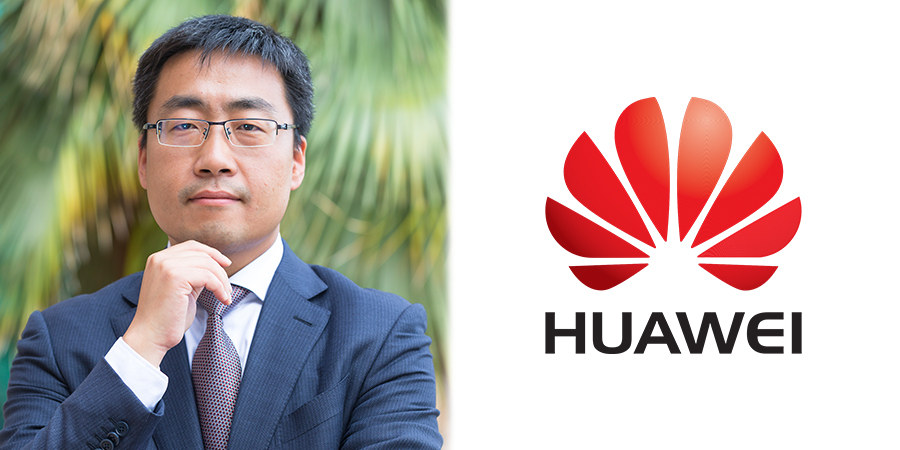5G transport networks are the foundation of 5G E2E systems and vital to scaled deployments of diverse applications across vertical sectors. To fulfill future service demands, transport networks must provide strong support for the assorted business demands of the 5G industry. For operators, the biggest concern is how to achieve long-term evolution based on existing architecture while ensuring maximized investment returns in as short as possible ROI periods for early 5G pilot deployments. Building a cost-effective 5G transport network within the shortest possible period to address both short- and long-term challenges has proved a difficult task for global operators.
Requirements and Challenges Operators Must Address
In 5G, eMBB services are expected to be first to be commercially launched. These require 5G networks to provide a transmission capability of 10GE to sites and 50GE or even 100GE to access rings. In the Middle East, major operators from countries in the Gulf Cooperation Council (GCC) proposed the going-for-fiber initiative in 2016, with the aim to gradually increase the proportion of fiber-optical sites, particularly in metropolitan cities. With centralized baseband deployments, an enormous transmission capability of up to 100Gbps is required between sites and equipment rooms, creating challenges for transport networks.
Based on the current situation, going for optical fiber cannot be described as a simple or smooth process. The overall proportion of fiber-optical usage is below 20% in the Middle East. Even in GCC countries, this figure still stands below 40%. Operators are struggling to tackle many issues, including difficult ROW acquirement and costly and time-consuming network constructions. The need to discover multi-scenario and multi-media 5G transport solutions is a top priority among operators.
Strikingly similar business pressure but vastly different network status among global operators have created diverse 5G transport scenarios, making the task of finding appropriate transport solutions extremely difficult. Huawei launched the X-Haul solution to fulfill differentiated transport demands. This solution embodies a combination of multi-scenario, multi-media, and multi-form 5G transport products to assist operators in constructing E2E 5G networks.
- Long-term evolution towards future network architecture
At the access layer of transport networks, Huawei introduces innovative and cost-efficient 50GE flexible Ethernet ports, which allows for a smooth upgrade to 100GE. Such products allow operators to achieve 10GE access and 50GE/100GE convergence by replacing service boards to maximally alleviate the investment pressure for service demands in early 5G pilot deployments. To satisfy phased on-demand constructions, operators can implement E2E slicing to support differentiated demands in low-latency services and vertical innovations. Tier-1 operators in the Middle East have advantages in optical fiber resources to promote the smooth transition of fiber-optical sites at the convergence access layer.
- Maximizing existing network value to protect investment
In the Middle East, there are still 60% to 70% of sites with no fiber optical coverage. Operators thus expect microwave solutions to support evolution to 5G networks. With Huawei's X-Haul solution, huge bandwidth (10Gbps) and low latency (25μs) can be achieved based on traditional microwave bands. Both CA and MIMO are also supported to further increase spectral efficiency.
This means that operators can fulfill huge 5G transport bandwidth without using a new spectrum. Technological complexity and dependence on tower resources can be markedly reduced. In the meantime, existing investments can be fully reused for 5G-oriented microwave solutions. For example, modular antennas can be used to achieve flexible upgrade at legacy sites without replacing reflectors and performing a secondary alignment. Also, subracks can be reused to house new boards when upgrading to 10G-platform indoor units (IDUs).
- Premium Transport Assurance for Major Events
In areas with a high user density, for example in international exhibitions, sporting events, and large shopping malls, 5G sites can be deployed in CRAN mode and use full-outdoor (FO) OTN fronthaul solutions to save fiber-optical resources. Such a deployment mode also allows for comprehensive service access to SMEs, helping reduce network construction time and costs and maximizing the value of existing networks. With 4G fronthaul technological verification in 2016 in the UAE and soon-to-complete testing of 5G CRAN networking and fronthaul transport solutions in Saudi Arabia, rich experience can be acquired in fronthaul transmission for international exhibitions, such as Dubai Expo 2020.
5G innovative services create high expectations for smart networks in increasingly dominant commercial scenarios. User-centric network operations are calling for transport networks to transform to a smart architecture. Huawei has launched intent-driven network solutions that feature intelligence, simplicity, ultra-broadband, security, and openness. Empowered by these solutions, operators are able to build experience-centric networks to help redefine 5G business landscapes.
Joint Innovation with Operators to Accelerate Commercialization
Huawei's 5G transport solutions are gaining trust and support from a growing number of world-leading operators.
In the Middle East,Huawei is planning further verification tests in cooperation with major operators in Saudi Arabia based on various microwave transport solutions. These include microwave E-bands, CA + MIMO on traditional bands, and 5Gbps to 10Gbps to sites in various complex backhaul scenarios. The verification will also include co-channel interference cancellation (CCIC) that help increase microwave spectral efficiency in 5G.
Embracing the era of 5G, Huawei will focus on helping operators in the Middle East achieve a smooth evolution from 4G transport networks. Huawei will continue to strengthen technological and business innovations through cooperation with operators and industry partners to increase the confidence of vertical industries in seeking high-speed development. Huawei will help operators and vertical industries develop healthy 5G ecosystems and pursue new heights of business success.
By Anjian, President, Carrier Network Business Group, Huawei, Middle East










